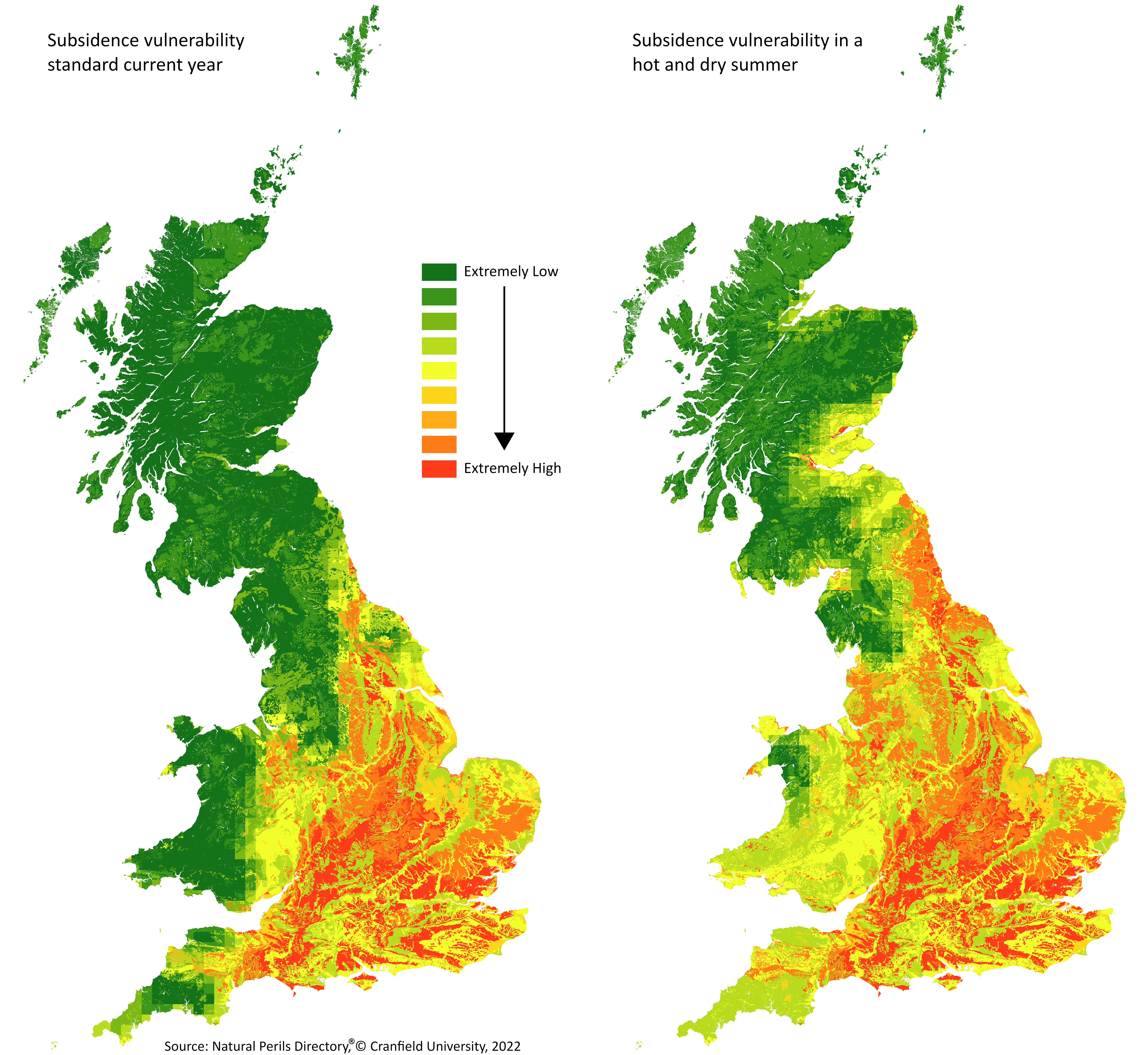‘Millions’ of UK properties at heightened risk of subsidence after record drought
Exclusive: Insurers already reporting surge in claims as drying ground compromises buildings
Millions of properties in the UK are at heightened risk of subsidence due to this summer’s record heatwave and drought, insurers, surveyors and geologists have warned.
Insurance companies have already seen a significant spike in claims relating to subsidence, and the areas affected by the problem are growing due to continued water scarcity drying out soils.
One leading home insurer told The Independent that claims for subsidence were up by 218 per cent for the first two weeks of August compared to the same period last year, and another said claims were already at the level it saw during the 2018 heatwave when subsidence claims quadrupled.
With this year’s record-breaking temperatures and drought even more intense than the summer of 2018, experts warned a wave of subsidence issues was likely.
Have you been affected by this story? If so email harry.cockburn@independent.co.uk
Particularly at risk are properties built on clay-rich soils, which affects a swathe of England, particularly in the southeast, but also in the Midlands, the northeast coast, and parts of the southwest.
This covers millions of homes and business premises, the Royal Institute of Chartered Surveyors (RICS) told The Independent.
Gary Strong from the RICS, a former subsidence surveyor, said there was “still a great risk” posed by subsidence, even though building regulations have changed in recent decades to give modern homes greater resilience to subsiding soils.

“The existing housing stock is Victorian or built in the 1920s or Thirties, and is at risk because their foundations are very shallow.”
He said hairline cracks which appear in walls during summer months tend to widen by autumn, so “most subsidence claims are usually in late September or October”.
“It could well be the case that we see something of that magnitude [summer 2018] again. There’s a high potential for a big increase in claims.”
LV= General Insurance, one of the largest home insurers in the UK, told The Independent that its own analysis indicates that southern and central England has had lower rainfall levels in 2022 than in 2018, and said it had seen a 218 per cent increase in subsidence claims in the first two weeks of August this year compared to the same period last year.
Mark Butler, home claims operations director at More Than insurance, said its claims teams were seeing a similar pattern.
He told The Independent: “The weather over the coming months will influence the volume of subsidence claims we see this year, however, we have started to see an increase in subsidence claims notifications compared to the last three years, with current volumes similar to those seen in 2018.”
Rebecca Rogers, head of property claims at insurer Allianz, said it was braced for a “surge in subsidence claims” following the heatwave and drought.

She added: “Subsidence is different from any other perils. Claims tend to be more complex, involve more parties and take longer to settle. Very often, there is no quick fix. Underpinning a property is so disruptive that people usually need to move out. Works take a lot of time and money and release a lot of carbon. That is why prevention is so important.”
While the heatwave is over, large parts of the UK are still in drought, and subsidence issues may only be just beginning, experts at the British Geological Survey (BGS) cautioned.
Katy Lee, a geologist specialising in hazards and resilience at the BGS, said: “When we have these prolonged very dry spells, you do tend to find the soil moisture content gets drier and drier the longer the drought goes on, and that begins to cause more significant issues.”
A particular concern was the speed at which the UK recovers from the drought and there are already concerns that if groundwater levels remain low, subsidence issues could continue into the new year, the BGS said.
Russell Lawley, a geoscientist at the BGS, added: “When we get concerned is when you have an intense drought and then quite a dry winter, [meaning] there isn’t the level of water recovery you’d normally expect. Then you’re into multi-season desiccation of the soils and then it becomes harder because of the soil moisture deficit.”
Maps from Cranfield University, which holds the UK’s national soil maps and provides expert analysis on how weather, climate and other factors can impact land, show how this year’s drought has expanded the areas at risk of subsidence.
Professor Stephen Hallett, of the university’s Environment Centre, told The Independent: “The two maps show firstly the levels of vulnerability to subsidence across Britain in a normal year, with a relatively higher vulnerability in the southeast of the country. The second map shows the changing effects of a hot dry summer on the pattern of vulnerability.”
“In a particularly hot, dry summer, such as the 2018 drought, or the recent drought, the patterns of vulnerability change as the climate dries. Depending on the severity of the drought, the extent of the higher vulnerability patterns extends west and north, with the effects also becoming particularly more pronounced in the southeast.”
One unforeseen result of increasing subsidence levels could be that checks by mortgage lenders on the state of buildings in high-risk areas could slow down mortgage applications or those looking to remortgage.
Mr Strong, of the RICS, said: “What’ll probably happen this year, around October or November time, people trying to sell or remortgage – especially with interest rates going up – valuers working on behalf of lenders will be particularly looking for signs of subsidence as a result of this dry summer.
“Any cracking found could then result in structural engineers’ reports being required to reassure lenders. Inevitably that slows the whole thing down and creates a claim against the insurance company,” he said.
For those concerned, the Association of British Insurers urged the public not to panic.
A spokesperson said: ”Our advice is don’t panic if you spot a crack in your home – there are many other reasons why these may have occurred. Get in touch with your insurer if you believe your home is experiencing subsidence and they’ll be on hand with the best expertise and the best technology. Insurers and their appointed loss adjusters are very well equipped to deal with these types of complex claims.”
Read More: Indepdendent Advisor can help you find the best home insurance
Join our commenting forum
Join thought-provoking conversations, follow other Independent readers and see their replies
Comments




Bookmark popover
Removed from bookmarks